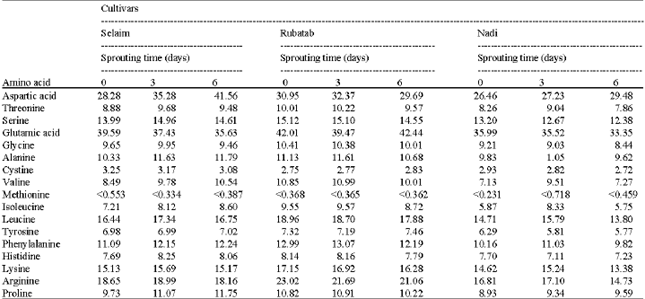Research Article
Effect of Sprouting on Chemical Composition and Amino Acid Content of Sudanese Lentil Cultivars
Department of Food Science and Technology, Faculty of Agriculture, University of Khartoum, Khartoum North 13314, Shambat, Sudan
Mashair A. Sulieman
Department of Food Science and Technology, Faculty of Agriculture, University of Khartoum, Khartoum North 13314, Shambat, Sudan
Mohamed M. Eltayeb
Department of Food Science and Technology, Faculty of Agriculture, University of Khartoum, Khartoum North 13314, Shambat, Sudan
Elfadil E. Babiker
Department of Food Science and Technology, Faculty of Agriculture, University of Khartoum, Khartoum North 13314, Shambat, Sudan
Abdelmoneim I. Mustafa
Department of Food Science and Technology, Faculty of Agriculture, University of Khartoum, Khartoum North 13314, Shambat, Sudan
Abullahi H. El Tinay
Department of Food Science and Technology, Faculty of Agriculture, University of Khartoum, Khartoum North 13314, Shambat, Sudan










